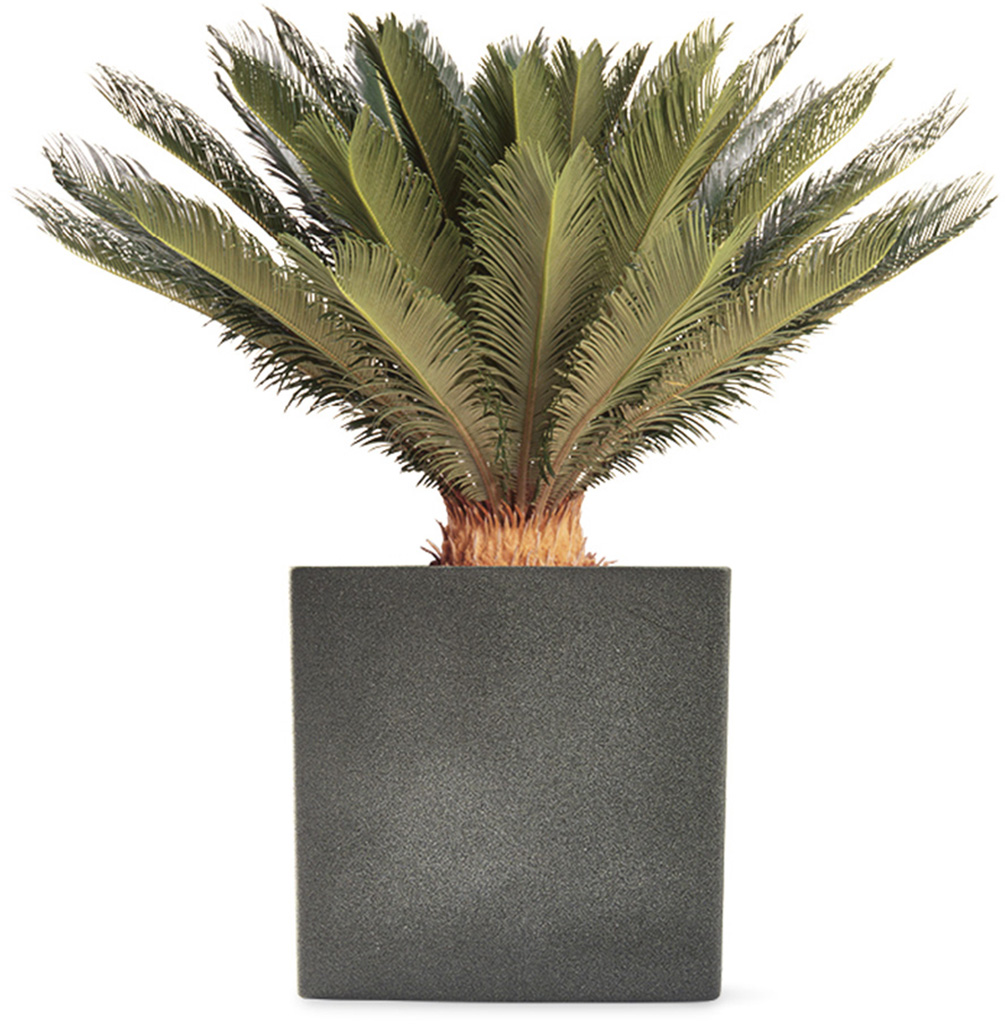SAGO PALM
CYCAS REVOLUTA
The sago palm is a cycad—an ancient, slow-growing plant—rather than a true palm, but its chunky trunk and arching, fernlike fronds certainly offer a tropical look. This is the perfect statement plant for a bright hallway and its architectural shape makes it a popular choice.
HEIGHT 36in (90cm)
SPREAD 36in (90cm)
FLOWERS White, featherlike
FOLIAGE Long, serrated
LIGHT Filtered sun
TEMPERATURE 55–75°F (13–24°C)
CARE Easy
PLACE OF ORIGIN China, southern Japan
WARNING! All parts are toxic; leaves are sharp; gloves required when handling
CARE
This slow-growing plant is often sold as a small specimen, but it will grow to be a fine, impressive plant in time. Its fronds are robust and prickly, so it needs space when mature. The sago palm is a terrific feature for a large entrance hall or reception area.
A room that has filtered light and moderate humidity is the ideal spot for this plant. To keep it healthy, allow the top of the potting mix to dry out between spring and summer and reduce watering further in winter.
Feed with a half-strength balanced fertilizer once a month in spring and summer, and grow in a 1:1 mix of commercial and enriched potting mixes. This is a top-heavy plant, but the heavy potting mix will help it to remain upright. Repotting is only necessary every three years, which is good news if you’re growing a large specimen.
Given the right conditions, this palm will be with you for life. When very mature, plants produce offsets that can be removed and potted.
PROBLEM SOLVING Overwatering or watering into the crown of the plant can cause the sago palm to rot. If the lower leaves of the plant turn brown, simply cut them off—this is quite normal. When the tips of the leaves turn brown, increase the humidity around the plant by misting it with water. Red spider mites can be an issue for the sago palm.

Position this plant carefully to avoid injury from its needle-like leaves.
DID YOU KNOW? THE SAGO PALM IS AN ANCIENT PLANT THAT WAS DOMINANT DURING THE JURASSIC PERIOD, SO IT HAS BRUSHED SHOULDERS WITH THE DINOSAURS.
DISPLAY
This is a plant that can provide a dramatic, eye-catching display all on its own, especially when planted in a stylish, generous container. To create a really tropical look, group it with some true palms such as the date palm and the bamboo palm. Plant them all in individual containers so that you can turn the pots to prevent them from leaning toward the light.
Houseplants A–Z | SAGO PALM
ALSO TRY
The stout, woody trunk of the sago palm is almost as fascinating as its dramatic foliage. If interesting trunks and stems appeal, then try growing this unusual plant alongside your sago palm—it will also thrive in filtered light and moderate humidity:
- Money tree (Pachira aquatica), height 6ft (1.8m). This large, distinctive plant is a mixture of a tree and a palm in appearance. It has elegant foliage and a striking, woody stem that’s often braided. The money tree is said to bring good luck into the home and is frequently displayed in hallways.

Mature money trees are often sold with plaited stems. These plants have lush, glossy foliage that’s divided into leaflets.
